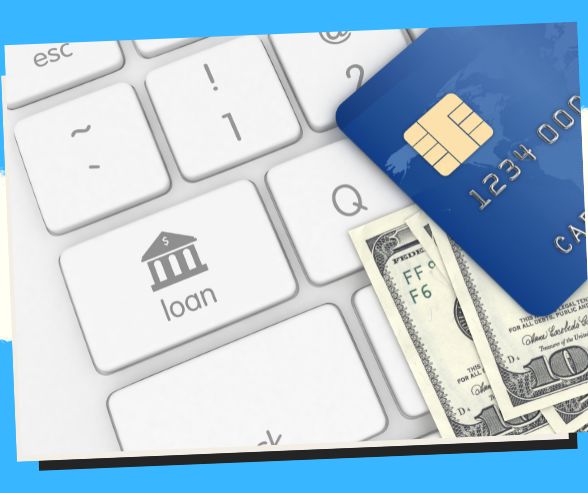
Revolutionizing Loans: Tracing the Journey from Traditional to FinTech Lending!
Discover the fascinating journey of lending – witness the seismic shift from traditional banks to cutting-edge FinTech platforms.
The Evolution of Online Lending: From Traditional to FinTech 📈💻🚀
In the world of finance, the concept of lending has been a cornerstone of economic growth and development. For centuries, lending institutions have provided individuals and businesses with the capital needed to pursue their goals, invest in opportunities, and manage unexpected financial challenges. However, the landscape of lending has transformed dramatically with the advent of technology, giving rise to the era of online lending, often referred to as FinTech lending. In this article, we explore the fascinating journey of online lending, tracing its evolution from traditional lending models to the disruptive force of FinTech innovation, and the profound impact it has had on the global financial ecosystem.
The Foundations of Traditional Lending
Before the digital age, lending operated within the confines of brick-and-mortar banks, credit unions, and other financial institutions. Traditional lending involves a series of time-consuming processes, extensive paperwork, and manual assessments of creditworthiness. Borrowers had to physically visit a bank branch, fill out forms, and often wait days or even weeks for a lending decision. This process was marked by high overhead costs and limited accessibility, particularly for individuals with limited access to physical banking locations.
The Dawn of Online Lending
The rise of the internet in the late 20th century laid the groundwork for a seismic shift in the lending landscape. The first wave of online lending emerged with the advent of internet-based peer-to-peer (P2P) lending platforms in the early 2000s. These platforms sought to connect borrowers directly with individual investors, circumventing the need for traditional intermediaries.
P2P Lending Platforms
P2P lending platforms created a new paradigm by leveraging technology to facilitate lending transactions. Borrowers could submit loan requests online, detailing their financial needs and credit history, while investors could browse through loan listings and choose which loans to fund. This direct connection between borrowers and lenders streamlined the process, often resulting in quicker lending decisions and potentially lower interest rates for borrowers.
Challenges and Growth
While P2P lending brought innovation to the lending landscape, challenges arose in areas such as credit risk assessment, regulatory compliance, and default rates. Over time, these platforms evolved, with some transitioning to a marketplace lending model that involved partnering with traditional financial institutions to provide loans. This hybrid approach aimed to combine the efficiency of online platforms with the stability and experience of established lenders.
The FinTech Revolution: Changing the Game
The true revolution in online lending came with the broader growth of financial technology, or FinTech. As technology advanced, so did the capabilities of lending platforms. The integration of big data, artificial intelligence (AI), and machine learning into lending processes enabled more accurate credit risk assessments, faster lending decisions, and improved customer experiences.
Key Characteristics of FinTech Lending
- Efficiency: FinTech lending platforms automated various stages of the lending process, reducing paperwork and manual assessments. This led to faster approvals and disbursements.
- Data-Driven Insights: Advanced data analytics allowed for better assessment of credit risk. Alternative data sources, such as social media activity and online behavior, became valuable indicators of a borrower’s creditworthiness.
- Personalization: AI-powered algorithms enabled personalized loan offers tailored to individual borrower profiles, resulting in more relevant lending options.
- Accessibility: Online lending democratized access to credit, enabling borrowers from diverse backgrounds and regions to access loans without geographical constraints.
Variety of Online Lending Models
As FinTech innovation surged, various online lending models emerged to cater to different needs:
- Peer-to-Peer Lending (P2P): While some early P2P platforms evolved, new ones continued to emerge, providing a platform for individuals and institutional investors to lend directly to borrowers.
- Marketplace Lending: This model involves partnerships between online platforms and traditional financial institutions to offer loans. The online platform handles the technology and customer experience, while the institution provides the capital.
- Online Small Business Lending: FinTech platforms began catering to small businesses, offering fast and flexible loans to entrepreneurs who struggled to secure financing from traditional sources.
- Alternative Credit Scoring: Some FinTech platforms focus on serving individuals with limited credit history by using alternative data sources to assess creditworthiness.
Regulatory Considerations and Challenges
As online lending expanded, regulators and policymakers grappled with ensuring consumer protection, preventing fraud, and maintaining financial stability. Balancing innovation with regulatory oversight became a critical challenge. Different regions adopted varying approaches, with some embracing FinTech and others imposing stringent regulations.
The Global Impact
The evolution of online lending has had a profound impact on individuals, businesses, and the broader financial ecosystem:
Financial Inclusion
Online lending has extended financial services to individuals and businesses that were previously excluded from the traditional banking system. This is particularly significant in regions with limited access to brick-and-mortar banks.
Speed and Convenience
Borrowers can now access funds quickly and conveniently through online platforms, eliminating the need for lengthy approval processes and paperwork.
Competition and Lower Costs
The emergence of FinTech lending has intensified competition in the lending space, leading to potentially lower interest rates and fees for borrowers.
Investment Opportunities
Online lending has provided new investment avenues for individuals seeking alternative ways to grow their money, diversify their portfolios, and earn interest.
Challenges and Future Directions
While the evolution of online lending has been transformative, challenges persist:
Cybersecurity and Privacy Concerns
The digitization of financial transactions has raised concerns about cybersecurity and data privacy. Ensuring the protection of sensitive financial information is crucial.
Overcoming Bias in Algorithms
AI-powered credit assessments are not immune to biases present in historical data. Efforts are needed to ensure fairness and prevent discrimination in lending decisions.
Regulatory Alignment
Harmonizing regulations across different regions is essential to ensure a level playing field for FinTech lenders and traditional financial institutions.
Closing Thoughts
The journey of online lending from its humble beginnings to the realm of FinTech showcases the power of technology to reshape traditional industries. By leveraging data, automation, and advanced algorithms, online lending has made the borrowing and lending process more efficient, accessible, and inclusive. As the FinTech revolution continues to unfold, the potential for further innovation in online lending remains boundless, promising a future where financial services are more equitable, efficient, and tailored to individual needs. 🌐💰🌟
Note: The information provided in this article is based on the state of knowledge as of September 2021.
Related Queries
🚀🌐 Transforming Lending: Traditional to FinTech Evolution Unveiled!
🔍💳 Discovering Online Lending’s Shift: Tradition Meets FinTech Future
🔀📱 From Old to Bold: The Journey of Traditional to FinTech Lending
💡🏦 Reinventing Borrowing: FinTech’s Impact on Traditional Lending
🔄💰 Flipping the Script: Online Lending’s Traditional to FinTech Twist
🌪️💸 The Lending Revolution: Saying Goodbye to Traditional, Embracing FinTech
🔮💻 Future of Borrowing: The Magic of Traditional to FinTech Lending
🎯🔗 Mapping Lending’s Path: Traditional to FinTech Evolution Explored
Save/Share this story with QR CODE
Disclaimer
This article is for informational purposes only and does not constitute endorsement of any specific technologies or methodologies and financial advice or endorsement of any specific products or services.
📩 Need to get in touch?
📩 Feel free to Contact NextGenDay.com for comments, suggestions, reviews, or anything else.
We appreciate your reading. 😊Simple Ways To Say Thanks & Support Us:
1.) ❤️GIVE A TIP. Send a small donation thru Paypal😊❤️
Your DONATION will be used to fund and maintain NEXTGENDAY.com
Subscribers in the Philippines can make donations to mobile number 0917 906 3081, thru GCash.
3.) 🛒 BUY or SIGN UP to our AFFILIATE PARTNERS.
4.) 👍 Give this news article a THUMBS UP, and Leave a Comment (at Least Five Words).
AFFILIATE PARTNERS

World Class Nutritional Supplements - Buy Highest Quality Products, Purest Most Healthy Ingredients, Direct to your Door! Up to 90% OFF.
Join LiveGood Today - A company created to satisfy the world's most demanding leaders and entrepreneurs, with the best compensation plan today.



 Business Technology, Finance Technology & Information Technology
Business Technology, Finance Technology & Information Technology





